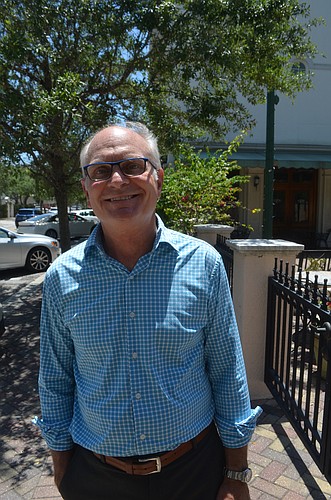- December 20, 2025
-
-
Loading

Loading

Last summer, amid a spike in development in the Rosemary District, Howard Davis began reaching out to area stakeholders to discuss the future of the rapidly growing neighborhood.
The conversations were informal, but he found that people were eager to talk. The city approved a density bonus for the Rosemary District in 2014, designed to spur building activity in a neighborhood in need of redevelopment.
That policy quickly bore fruit. By 2017, the city had approved more than 1,100 residential units in the neighborhood. There hadn’t, however, been a corresponding plan for how to manage that growth, which created uncertainty for those invested in the district.
Davis wanted to develop that plan — and move quickly. Those initial informal conversations morphed into the Rosemary District Grassroots Planning Initiative. It’s a communitywide effort to assess the needs and desires of the Rosemary District, both today and into the future.
There had been some previous dialogue about how to address problems the area was facing, such as a shortage of green space or a need for better connectivity to downtown. Still, a comprehensive big-picture perspective was lacking, and building was already underway.
“We didn’t start with nothing,” Davis said. “But we’re trying to accelerate a process — that might not have happened at all — but if it had happened, would have been a lot slower than what happened here.”
Over the past three weeks, those involved with the planning initiative have spoken at neighborhood meetings to outline the progress made so far. It includes a vision statement for the neighborhood, nine guiding principles, more than 20 goals and more than 80 recommendations for how to achieve those goals.
It’s a wide-reaching list of ideas, borne from a survey of Rosemary District stakeholders. To create more green space, the neighborhood could convert segments of existing parcels into parks. To foster a live, work, play dynamic, the district could identify space for outdoor events and performances.
Some recommendations are simple, such as the creation of a single Rosemary District logo. Others are more ambitious, including the creation of a nonprofit housing trust to develop affordable residential units and achieve a mix of housing.
There are aspects of the plan that recommend using the neighborhood as a place for experimentation and looser regulations, hoping to maintain a distinct identity for the neighborhood through eclectic architecture and art.
As Rosemary District stakeholders took in this information, questions arose about how the proposed changes will be implemented. Davis knows that not all of the recommendations, developed with planning consultant Kimley-Horn, will be viable. But he’s seen members of the community eager to take the lead on issues they’re passionate about.
He thinks that’s how the neighborhood will be able to effectively pursue change on many fronts. Cost, public energy and other factors will determine the rate at which individual ideas move forward. Facing a long list of challenges, Rosemary District leaders see a community eager to get started.
“That’s a good place to be,” Davis said. “When we started this, remember, there were none of these specifics. Now, we have a whole series of things that came up from the process we engaged in.”
A presentation outlining the Rosemary District Grassroots Planning Initiative’s goals and recommendations is available at the organization's website.